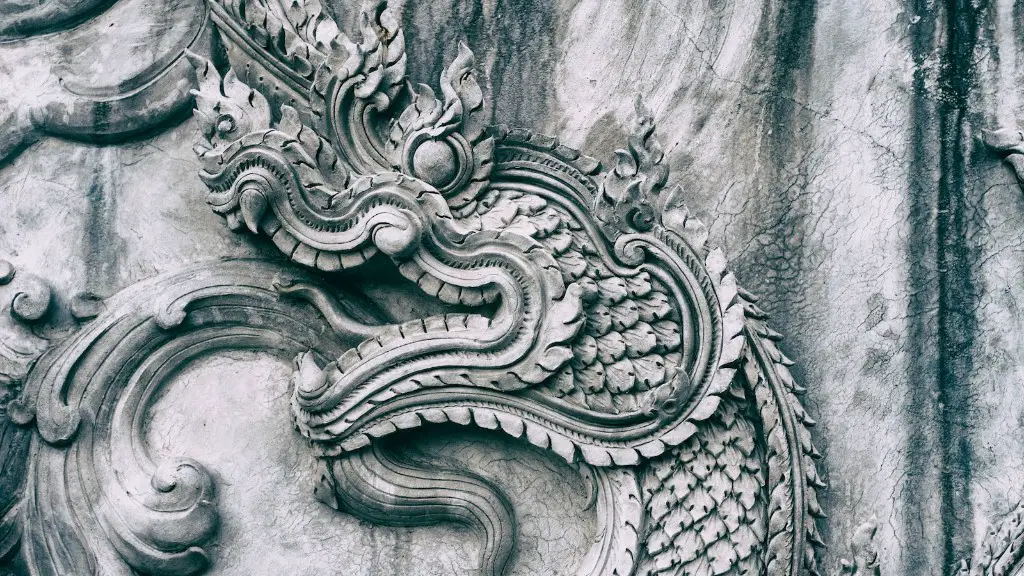In early Hinduism, performing religious rituals was an integral part of the religion. These rituals provided an opportunity for individuals to make offerings and to communicate with the gods. Rituals could be performed for personal or communal purposes, in the home, in the temple, or in the surrounding community.
Rituals were performed in many different forms, from simply making offerings to the gods to elaborate ceremonies involving music and dance. There were many different types of rituals, including offerings of food, flowers, and incense, reciting mantras, and making offerings of water and oil. In addition to worshipping the gods, these rituals were also believed to bring good luck and ward off misfortune.
In early Hinduism, the priests were the primary performers of these rituals. They were responsible for interpreting the scriptures and determining the specific rituals that should be conducted. Priests also acted as mediators between the people and the gods, and were the only ones allowed to perform certain rituals such as fire sacrifices.
Women also had an important role in early Hinduism, particularly in the realm of domestic rituals. They prepared the food, decorated the home and performed offerings such as pujas, as well as some of the more celebratory rituals such as singing and dancing. Women also cultivated a relationship between their family and the gods, by offering food and other items to the gods, as well as feeding their family and pleasing the gods with festive events.
In addition to the priests and women, the laypeople were also involved in the rituals. Laypeople would donate materials such as cloth, food, or even animals to the temple, and often participated in rituals such as festivals and processions. In some regions, the laypeople would take on the role of priest and conduct their own rituals, and priests would be present to give instruction and provide guidance.
While performing rituals was an important part of early Hinduism, it was not the only aspect of the religion. Rituals were used to express devotion to the gods, but also to communicate with them and invoke their blessings. They also provided an important platform for learning about the scriptures, and for structuring and reinforcing social morals. Therefore, while the priests were the primary performers of the rituals, they were only one part of a much larger religious and cultural practice.
Types of Rituals
Early Hinduism contained a range of different types of rituals, reflecting its diverse nature. Some of the most common types of rituals were fire sacrifices, in which a priest made offerings of food or flowers to the gods, as well as reciting mantras, and performing offerings of water and oil. In addition to sacrifices, other rituals included pujas, in which offerings of food, incense, and flowers were made. Rituals also included festivals and processions, as well as public ceremonies during important events.
Rituals served a variety of purposes, from offering blessings to the gods, to the honoring of the ancestors, and to appease the gods for past wrongs. Some rituals were considered necessary before major life events, such as marriage or funerals. Other rituals were conducted to ensure a plentiful harvest, or to bring about luck or fertility. Finally, some rituals were performed for purely spiritual reasons, to awaken the divine within individuals or to draw upon divine wisdom for guidance.
Tools and Instruments
In the performance of these rituals, priests and laypeople used a variety of tools and instruments. The most common tools used were the yajna shala (altar) and fire altar, as well as a variety of different musical instruments such as drums, bells, cymbals, and horns. Rituals also used objects such as flowers, incense, and fruit, as well as havis or oblations such as ghee, milk, and honey.
In addition to these instruments, ritual space was also important. Rituals were often performed in outdoor spaces such as on hills or river banks, or in open spaces such as courtyards and gardens. Some rituals were also performed in more enclosed spaces such as temples, tombs, and caves.
Ritual Hierarchy
Rituals were overseen by a hierarchy of priests, with the most senior priest, or Brahmana, presiding over the rituals. The Brahmana was responsible for interpreting the Vedas, the sacred scriptures of Hinduism, and determining the specific rituals that should be conducted. They were assisted by the lower classes of priests, who were responsible for the day-to-day operations of the rituals.
The priests were often supported by laypeople, who provided the materials needed for the rituals, and in some cases, even participated in them. Laypeople also had an important role outside of the ritual context, in propagating stories and myths about the gods, and in worshipping the gods in their own homes.
Sites of Rituals
Rituals were often performed in specific places, often ones associated with the specific gods or goddesses to be invoked. In addition to outdoor spaces such as hills, rivers, and fields, temples were key sites of ritual activity. These temples were often built to honor specific gods and goddesses, and contained shrines, wells, and other features associated with worshipping the gods.
In addition to temples, there were also other sites of ritual activity such as tombs, gardens, and caves. Tombs often served as a place of veneration for the dead, while gardens served as a place of respite, a place to commune with nature and the gods. Caves were often used as places of meditation and contemplation, as well as for more elaborate rituals.
Shifting Nature of Rituals
Rituals have continued to evolve throughout the centuries. Today, the emphasis is less on elaborate ceremonies and more on individual meditation and prayer in the home. Rituals are still an important part of Hinduism, but the forms and contexts in which they are performed have changed. Rituals today are more personal, and more geared towards facilitating a deeper connection with the divine.
That said, rituals are still an integral part of Hinduism and many of the same traditions and practices of early Hinduism can still be found. Even in today’s modern world, Hinduism has retained its focus on ritual and its power to bring people closer to the divine.
Concept of Karma
Karma, the belief that our actions have consequences, is an integral part of Hinduism and is closely linked to the performing of rituals. The concept of karma teaches us that the way we act and the choices we make will have an effect on the future, and it is the rituals that help to ensure that our actions are in line with dharma, the ethical code of conduct. By performing rituals, we are able to shape our destiny and help us to cultivate a harmonious relationship with the gods and the planet.
Karma also plays an important role in the performance of rituals, as it encourages us to be mindful of our actions. Rituals are an important reminder of the consequences of our actions, and their performance can be seen as an acknowledgement of karma, a way of taking responsibility for our lives.
Conclusion
Rituals were an important part of early Hinduism, and continue to play a vital role in the religion today. They provide an opportunity for individuals to connect with the divine, as well as to reinforce social norms and cultivate a harmonious relationship with the gods. The different types of rituals and tools used, as well as the shifting nature of rituals over the centuries, all highlight the importance of ritual in Hinduism.

